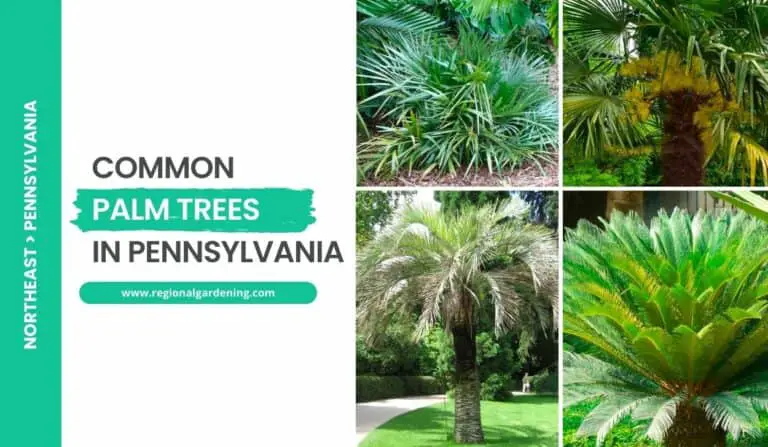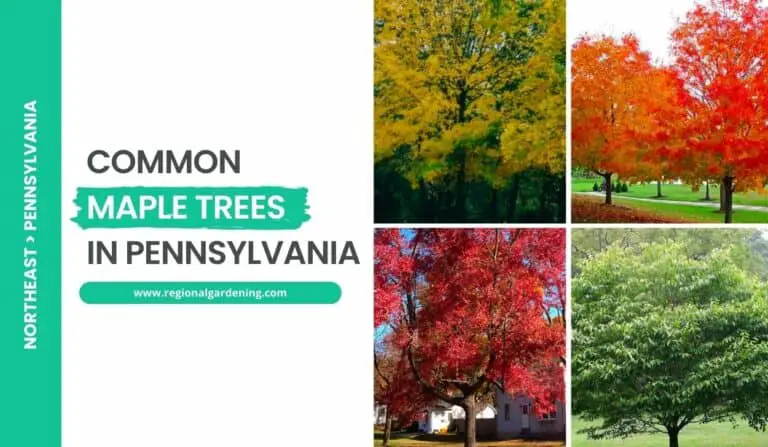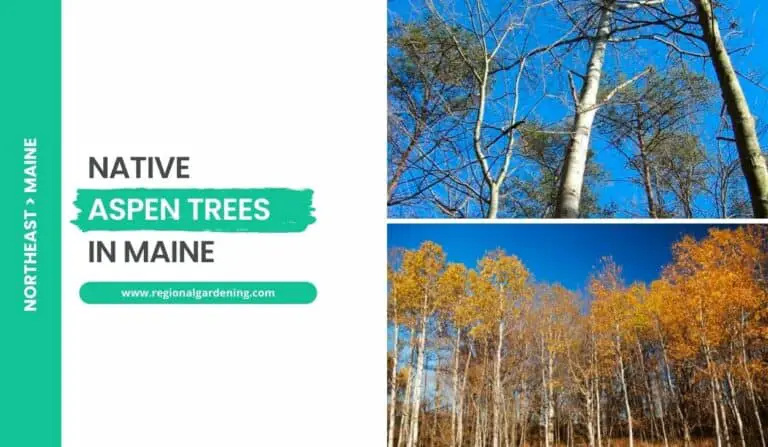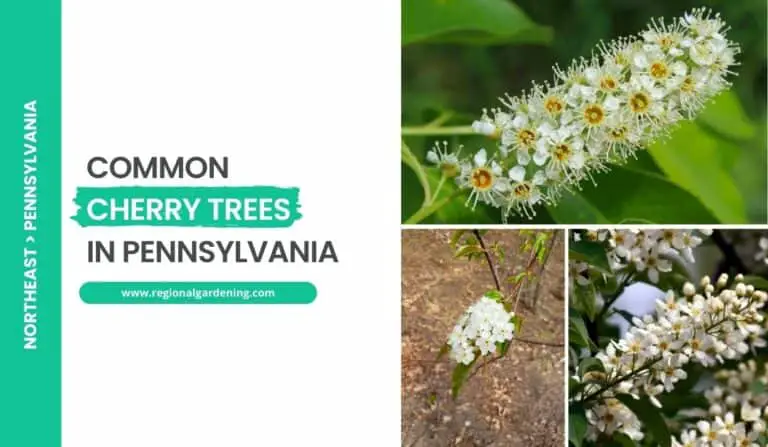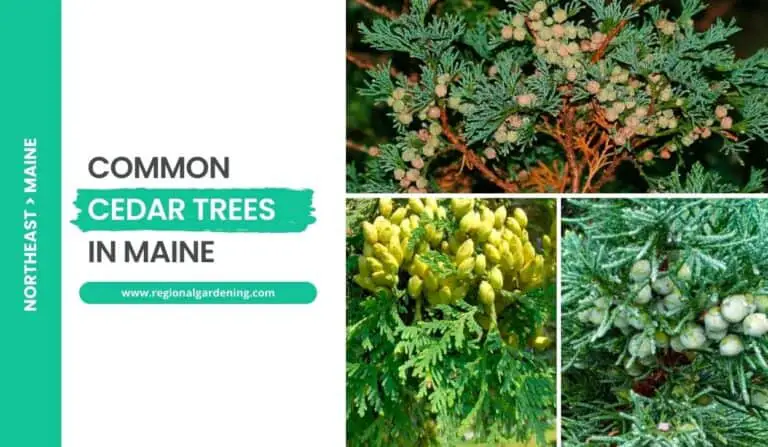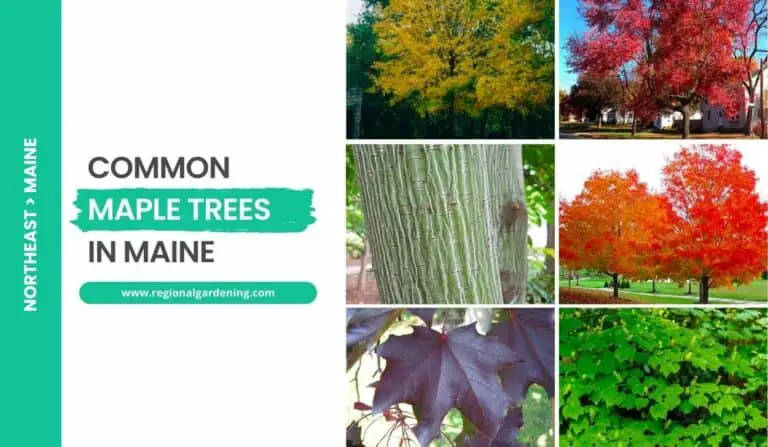4 Common Ash Trees In Maine (Photos & Details)
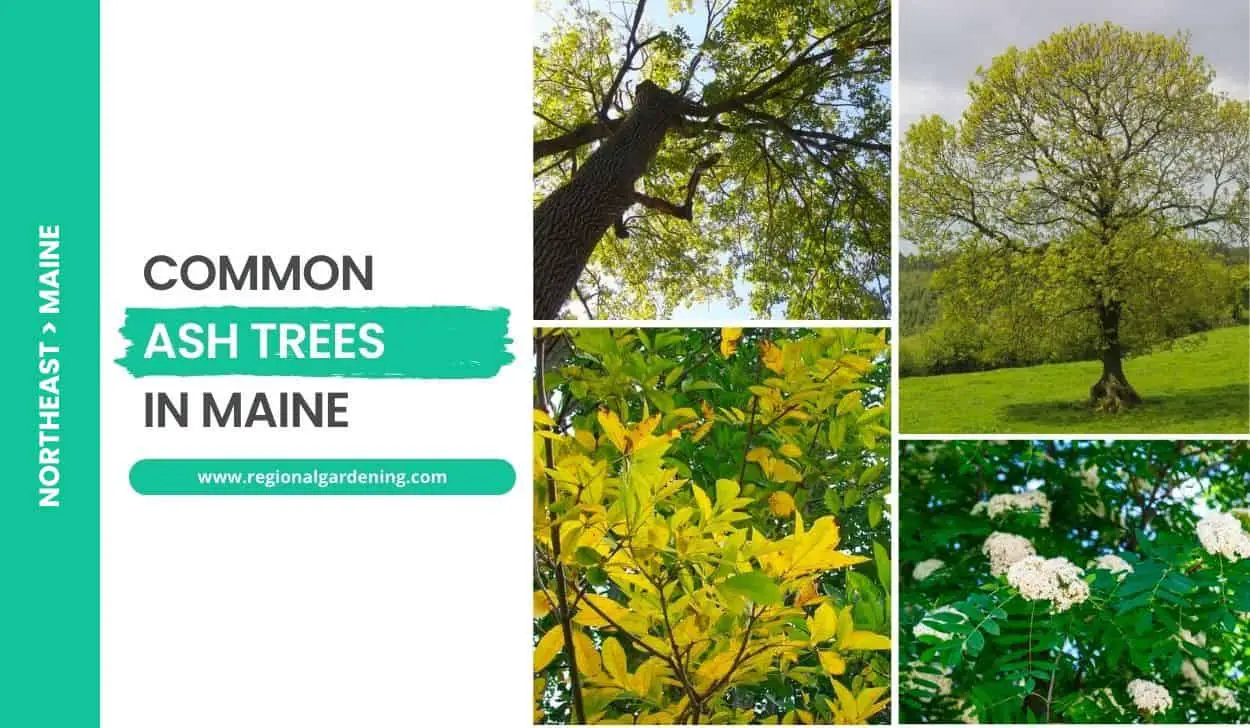
The ash trees stand tall and proud in the lush forests of Maine, their branches reaching for the sky. These hardy trees not only enhance the beauty of the landscape but also provide important ecological benefits.
Ash trees have a significant presence in the state, from their sturdy wood used for furniture and flooring to their role in wildlife support.
This article will look at four common ash trees in Maine, delving into their unique characteristics, uses, and impact on the natural environment.
So, let’s get started.
1. Black Ash
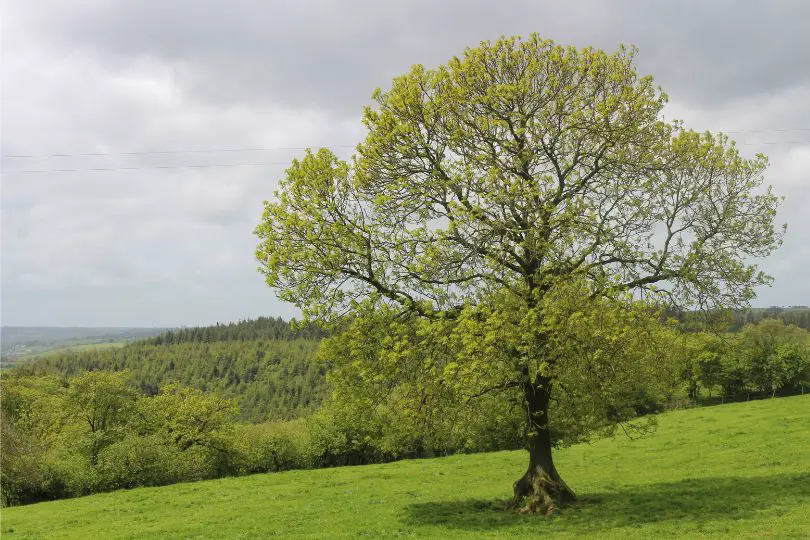
- Scientific Name: Fraxinus nigra Marsh.
- Common Name(s): Black Ash, Brown Ash
- Mature Height: 50-60 feet (15-18 meters)
- Native Region: North America
- Flowers: No Flowers
- Fruit: Clusters of single samaras, the seed is flattened and surrounded by a wing.
- Uses: Interior finishing, cabinet work, baskets, pulp (limited extent), barrel hoops (historically)
The Black Ash, scientifically known as Fraxinus nigra Marsh., is a tall and thin deciduous tree widespread across Maine. It grows well in rich, damp soil, cold, wet bogs, and along riverbanks. This tree matures to a height of 50-60 feet (15-18 meters) with a diameter of 10-20 inches. Its trunk is frequently branchless for a long distance from the ground.
The Black Ash bark is gray to dark gray, corky and spongy, and has parallel ridges. It is readily removed with the hand. This tree’s leaves are opposite and are 12-15 inches long. They are made up of 7-11 leaflets that are 4-5 inches long and have lance-shaped shapes with remotely serrated borders. The upper surface of the leaves is dark green, with buff-colored hairs near the leaflet-rachis junction.
Black Ash produces clusters of little flying fruits known as samaras. The seeds are flattened and completely encircled by the wing. This tree’s twigs are smooth and gray to olive-green, with black or brown buds that are pointed at the tip. The bark’s inner layer is dirty white.
Black Ash wood possesses coarse-grained, hefty, robust, and lasting properties. It is also recognized for its pliability, which makes it appropriate for a variety of applications. This wood is extensively used in interior design, cabinetry, basketry, and, to a lesser extent, pulp manufacture. Black Ash was previously used to construct barrel hoops.
It is critical to create the proper circumstances for Black Ash to thrive in Maine environments. It must be planted in rich, moist soil or damp wetlands with plenty of water. This species is ideal for preserving water quality, controlling erosion, and providing wildlife habitat. The wood of the Black Ash is especially valuable, making it a popular choice for furniture and other woodcrafts.
2. Green Ash
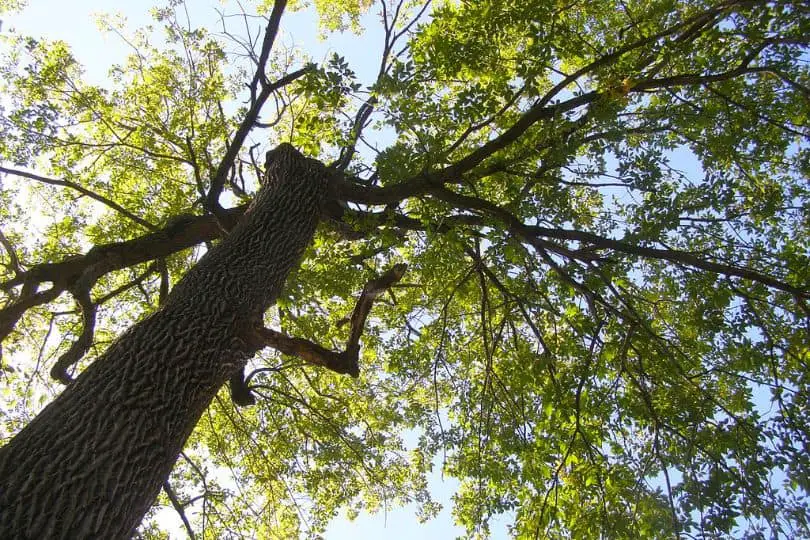
- Scientific Name: Fraxinus pennsylvanica Marsh.
- Common Name(s): Green Ash, Red Ash
- Mature Height: 50-60 feet (15-18 meters)
- Native Region: North America
- Flowers: Greenish-yellow, small clusters (No Flowers)
- Uses: Lumber, furniture, tool handles, flooring, and cabinets.
Green Ashes are the tallest ash trees in Maine that can reach up to 60ft height. It is often known as Red Ash, and is a deciduous tree widespread throughout Maine, particularly along major rivers.
While not as frequent as white and black ash, it is nevertheless found throughout central Maine. This tree frequently gets confused with black ash, but you can tell it apart by looking at its habitat, which includes growing close to the banks of streams and lakes on rich, moist soil.
Strong branches on older trees that bend downward to form an uneven and compact head within the forest make Green Ash easy to identify. It matures to 50-60 feet in height and 16-20 inches in diameter. The bark of elderly trees is dark gray or brown, hard, and furrowed, similar to that of white ash.
Green Ash leaves are opposite, 10-12 inches long, and have 7-9 leaflets per stalk. The leaflets are oval to elliptical in form and range in length from 4-6 inches. They have a yellow-green upper surface and are hairy beneath and on the rachis. The leaflets’ top halves may have toothed edges.
Green Ash blooms in little clusters of small greenish-yellow flowers. Some trees, however, may not have blossoms. Green Ash fruit is unusual, having a funnel-shaped seed body that eventually merges into a terminal wing.
In terms of Maine landscape care, Green Ash thrives in damp, rich soils, making it ideal for planting near streams and lakes. It can tolerate both direct sunlight and partial shade but prefers direct sunlight. This tree requires little care and grows well in a variety of soil types, including loam, clay, and sandy soils. Pruning is recommended to keep the structure healthy and to eliminate any damaged or diseased branches.
Green Ash wood is dense, hard, heavy, and coarse-grained. While its grade is not as high as that of white ash, it is nonetheless employed for a variety of uses. Lumber, furniture, tool handles, flooring, and cabinets are all common applications.
3. White Ash
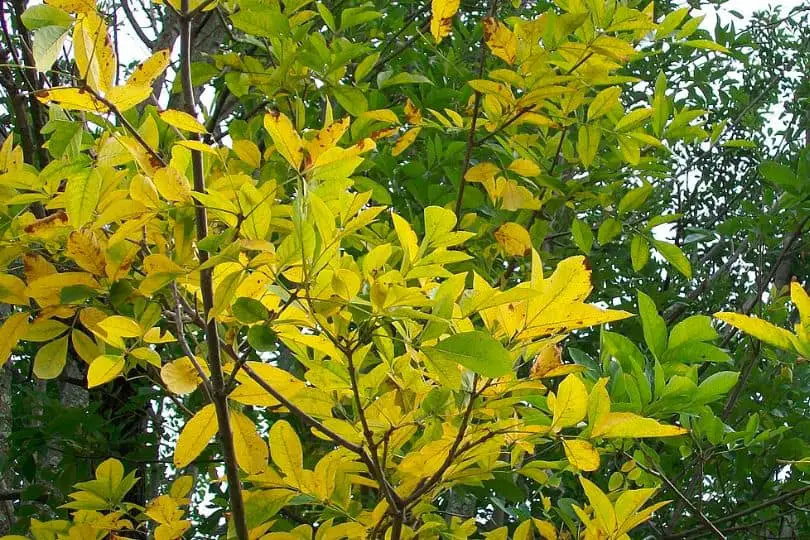
- Scientific Name: Fraxinus americana L.
- Common Name(s): White ash
- Mature Height: 60-70 feet (18-21 meters)
- Native Region: North America
- Flowers: No Flowers
- Fruit: Clusters of single samaras (winged seeds)
- Uses: Used for agricultural implements, tool handles, furniture, pulp, firewood, and sporting goods such as baseball bats, hockey sticks, and snowshoe frames.
Just like Green Ash, White ash trees are also considered to be the tallest ash trees in Maine settings, and their lumber is highly valued. It can grow to be 60-70 feet tall and 15-30 inches in diameter when mature. The erect or spreading branches of the white ash contribute to its thin top in forested environments.
White ash bark is unusual, resembling a woven basket with broad, parallel ridges and deep furrows. It ranges in hue from dark brown to deep gray.
The white ash’s leaves are opposite and have 5-9 (typically 7) leaflets. These leaflets measure 3-5 inches in length, are oval to lance-shaped, and have toothed edges at the tip. The upper surface of the leaves is usually bright and dark green, but in the fall it turns a soft, velvety purple. As its fruit, the white ash bears clusters of solitary samaras. The body of these winged seeds is cigar-shaped, with a terminal wing.
White ash trees flourish best in low-lying, rich, moist soil. They are native to North America and can be found all around Maine. They need to be watered regularly, especially during dry spells. A layer of mulch should be applied around the tree to assist conserve moisture and prevent weed growth. Pruning is also useful for removing dead or broken branches and maintaining the contour of the tree.
Aside from its aesthetic appeal in landscapes, white ash offers a variety of applications. White ash wood is firm, sturdy, and tough, making it perfect for a variety of uses. It’s often used to make agricultural tools, tool handles, furniture, interior finishes, dowels, pulp, and firewood. Furthermore, white ash wood is in high demand for the production of recreational equipment such as baseball bats, hockey sticks, and snowshoe frames.
4. Mountain Ash
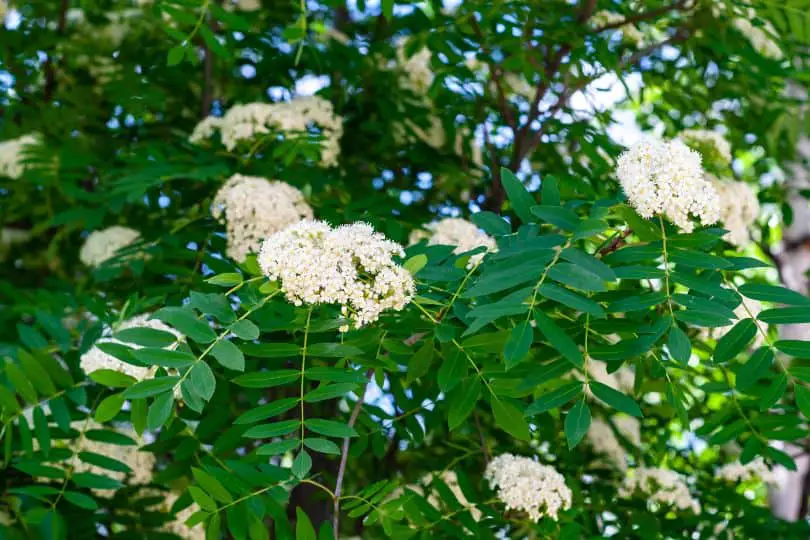
- Scientific Name: Sorbus americana Marsh.
- Common Name(s): American Mountain-Ash, Roundwood
- Mature Height: Rarely reaches over 20 feet (6 meters)
- Native Region: North America
- Flowers: Small, creamy-white flowers borne in cymes
- Fruit: Bright red, berry-like fruits about ¼ inch in diameter
- Uses: The fruits are sometimes used as an astringent in medicine.
The American Mountain Ashes are the shortest ash trees in Maine. However, it is not a true ash tree, despite its name, but rather a near relative of the apple tree. It rarely exceeds 20 feet in height, making it ideal for smaller spaces.
American Mountain Ash leaves are alternating and compound, measuring 13-17 inches long. Individual leaflets are tapered and sharply toothed, measuring 2-4 inches long and 5/8-1 inch wide. Unlike some other trees, the leaflets are hairless. This contributes to the tree’s smooth and appealing appearance.
The American Mountain Ash has small, creamy-white flowers that are grouped in cymes. When these blossoms bloom, they offer a touch of beauty to the tree. Following the flowering season, the tree produces brilliant red, berry-like fruits around 14 inches in diameter. These fruits linger on the tree until late winter, giving color to the environment. They are even employed in medicine for their astringent characteristics.
The American Mountain Ash is a North American native that can be found across Maine. It is most widespread in hilly areas and near the shore, where it thrives in a variety of settings. Because of its versatility, the tree is suitable for a variety of environments, including gardens and naturalized regions.
To care for American Mountain Ash trees in Maine, make sure it has well-drained soil and get full sun to partial shade. Watering is required regularly, especially during dry spells. The tree also benefits from frequent pruning to keep its shape and stimulate healthy development.
While the pale brown wood of the American Mountain Ash has minimal value due to its softness and fragility, the tree has additional uses. Its appealing appearance and compact stature make it a popular landscaping choice. It is suitable for use as a specimen tree or in group plantings. The persistent fruits make it a favorite of birds, attracting them to the garden and providing them with food.
Similar Articles
- Common Spruce Trees In Maine
- Common Oak Trees In Maine
- Common Pine Trees In Maine
- Common Birch Trees In Maine
- Common Maple Trees In Maine
- Common Cedar Trees In Maine
- Native Aspen Trees In Maine
- Native Hickory Trees In Maine
- Common Cherry Trees In Maine
- White Flowering Trees In Maine
Common Ash Trees In Maine – Sources
The Regional Gardening team makes sure that the information in our articles is accurate by only using sources that are known to be trustworthy. Some of these sources are peer-reviewed journals from government agencies, well-known universities, and scientific research organizations.
- Forest Trees of Maine, Maine Department Of Agriculture, Conservation & Forestry
- Identify Maine’s Common Foliage Trees, Maine Foilage
- Plants for the Maine Landscape, University Of Maine Cooperative Extension.
- Gardening to Conserve Maine’s Native Landscape, University Of Maine Cooperative Extension


